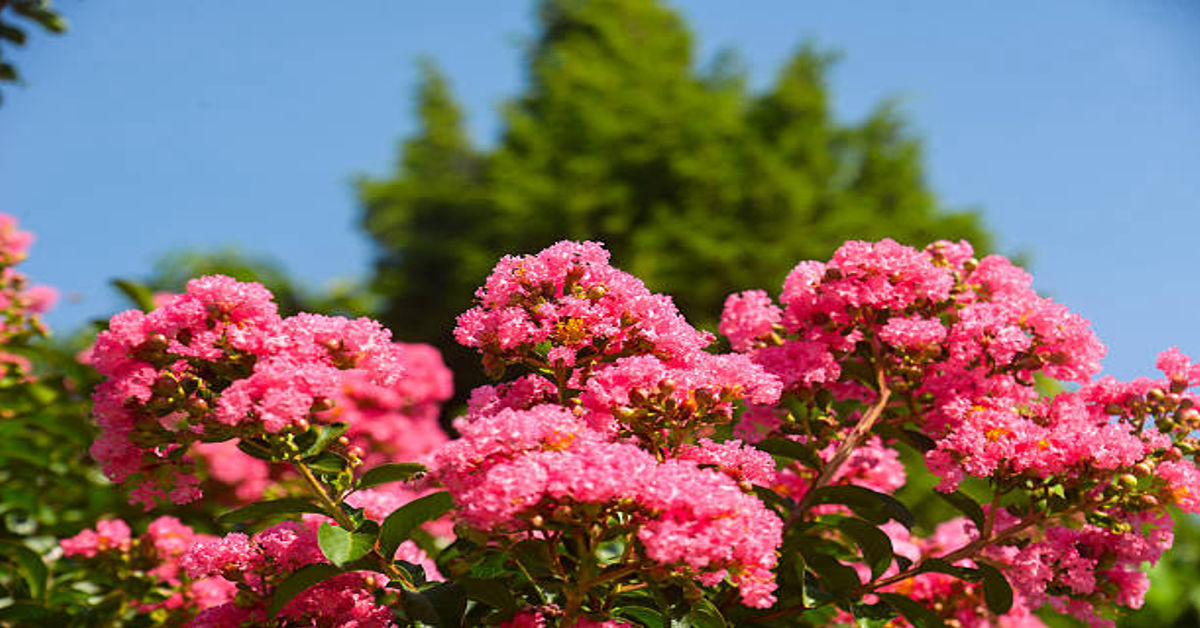The crepe myrtle, admired globally for its vivid summer flowers, attractive bark, and elegant branching, is a plant that merges beauty with durability in a way few ornamental species can rival. Known scientifically as Lagerstroemia, this flowering tree or shrub has become a cornerstone of landscaping in warm climates, offering gardeners the ability to enjoy prolonged blooms, architectural winter form, and minimal maintenance demands. What makes the crepe myrtle so fascinating is not merely its decorative value but its adaptability, wide range of varieties, and the unique traits that allow it to flourish in different environments. Understanding crepe myrtle means recognizing it as far more than a summer bloomer; it is a multi-seasonal landscape asset, a lesson in botanical resilience, and an intriguing example of how plant breeding can transform a wild species into an ornamental masterpiece. In this comprehensive guide, we will explore every significant aspect of crepe myrtles, from their origins and growth habits to cultivation techniques, landscape uses, maintenance, and troubleshooting. This article is written entirely in original language, with long, detailed paragraphs to give you a rich, educational reading experience.
1. History, Origins, and Botanical Background
Crepe myrtles originated in parts of Asia, mainly China, Korea, Japan, and India, where they naturally thrived in warm, humid climates. Traders and botanists in the 18th century first introduced the plant to Europe and later to North America, where it quickly became appreciated for its extended blooming season. Unlike many flowering trees that only shine for two or three weeks, crepe myrtles bloom for months—often from early summer into fall. Botanically, the genus Lagerstroemia includes more than 50 species, though only a handful are widely cultivated today. Among these, Lagerstroemia indica and Lagerstroemia fauriei are the most influential in modern landscaping, especially their hybrids, which combine disease resistance, vivid flower colors, and attractive bark patterns. Their name “crepe myrtle” comes from the delicate, crinkled texture of the flowers, resembling crepe fabric. Although commonly called a “myrtle,” it is not related to the true myrtle family; the resemblance lies only in the appearance of its leaves.
2. Growth Habit and Physical Characteristics
Crepe myrtles vary widely in size, shape, and form depending on their species and cultivar. Some varieties remain as compact shrubs only two to three feet tall, ideal for small gardens or container growing, while others mature into stately trees reaching heights of thirty feet or more. Their growth habit can be multi-trunked or trained as a single trunk, offering flexibility in visual design. The bark is a notable feature that enhances winter appeal; as the tree matures, the bark exfoliates, peeling away to reveal smooth wood in shades of cinnamon, gray, or tan. This characteristic gives crepe myrtle a sculptural presence even when leafless. Leaves are typically small, oval, and glossy, emerging in spring, turning deep green in summer, and often transitioning into fiery shades of red, orange, and yellow in fall. Flowers form in large clusters or panicles, showcasing colors that range across white, pink, lavender, red, and deep purple, depending on the cultivar. The plant’s long blooming period results from its ability to continuously produce new flower buds, especially when deadheaded or lightly pruned during the season.
3. Popular Crepe Myrtle Varieties
Crepe myrtles come in numerous cultivars, each suited for different landscape needs. Some are designed to fit small urban gardens, while others create bold statements in large properties or public spaces. Below is a helpful table outlining popular categories of crepe myrtles:
Table: Common Crepe Myrtle Size Categories and Cultivar Examples
| Category | Mature Height | Example Uses | Popular Cultivars |
|---|---|---|---|
| Dwarf (2–5 ft) | Very compact | Containers, borders, small gardens | Pokomoke, Dazzle series |
| Semi-Dwarf (6–10 ft) | Mid-sized shrubs | Foundation planting, hedges | Tonto, Red Rocket |
| Medium Tree (10–20 ft) | Versatile landscape trees | Yards, courtyards | Sioux, Catawba |
| Large Tree (20–30+ ft) | Major focal points | Parks, large properties | Natchez, Muskogee |
Breeders have expanded the choices substantially, producing plants with better disease resistance, stronger bark coloration, more intense blooms, and improved cold tolerance. The Lagerstroemia indica × fauriei hybrids are particularly prized for their resistance to powdery mildew, a common problem in older varieties.
4. Planting Crepe Myrtle Successfully
Proper planting is essential for maximizing the growth and long-term health of a crepe myrtle. These plants thrive in full sun, requiring at least six hours of direct sunlight daily. Insufficient sunlight leads to reduced blooming, weak stems, and greater susceptibility to disease. Soil should be well-drained, as crepe myrtles do not tolerate waterlogged conditions. While they are adaptable to different soil types, including sandy, loamy, or clay-based soil, amending with organic matter can improve structure and aeration.
When planting, dig a hole twice as wide as the root ball but no deeper than its height. Positioning is crucial—planting too deeply can suffocate the roots, while planting too shallowly risks instability. After placing the plant, backfill with native soil and water deeply to remove air pockets. Mulching around the base helps retain moisture and regulate soil temperature, but mulch should not be piled against the trunk. Crepe myrtles establish quickly; within one or two growing seasons, they begin to exhibit vigorous growth and improved blooming performance.
5. Soil, Watering, and Fertilization Needs
Crepe myrtles tolerate a broad range of soil conditions, but they perform best in slightly acidic to neutral soil with good drainage. Although moderately drought tolerant once established, younger plants require consistent watering during their first year. Deep, infrequent watering encourages strong root growth. Overwatering, particularly in poorly drained soils, can lead to root rot, causing decline or death.
Fertilization should be applied thoughtfully. Crepe myrtles do not require heavy fertilization, and excessive nitrogen promotes leafy growth at the expense of flowers. A balanced slow-release fertilizer applied in early spring is usually sufficient. Some gardeners choose to apply compost instead, which enriches the soil gradually and improves structure. Mulching is also beneficial; it maintains moisture levels and suppresses weeds, reducing competition.
Table: Soil and Watering Requirements for Crepe Myrtle
| Aspect | Optimal Condition | Notes |
|---|---|---|
| Soil pH | Slightly acidic (5.5–7.0) | Improves nutrient uptake |
| Soil Type | Well-draining | Avoid waterlogged conditions |
| Watering | Deep and infrequent | Promotes deep roots |
| Fertilizer | Low to moderate | Excess nitrogen reduces blooms |
6. Pruning Crepe Myrtles Correctly
Pruning is essential for maintaining shape, encouraging flowering, and preventing common mistakes such as “crepe murder,” a term coined by gardeners referring to the severe topping of crepe myrtles. Hard cutting damages branch structure, weakens the plant, and reduces natural beauty. Proper pruning focuses on removing crossing branches, deadwood, seed pods, and suckers while preserving the plant’s graceful natural form.
The best time to prune is late winter or early spring before new growth begins. Light pruning during the growing season can encourage additional blooming by removing spent flower clusters. When shaping, aim to open the center of the plant to allow better airflow and light penetration. Multi-trunk trees require selective thinning to enhance their sculptural form, while shrub varieties benefit from uniform shaping.
7. Landscape Uses and Design Possibilities
Crepe myrtles excel in landscaping due to their remarkable versatility. They can serve as specimen trees, hedges, border shrubs, container plants, or anchor plants in foundation designs. Larger varieties make impressive focal points along driveways or in front yards, where their long blooming season provides continuous visual appeal. Smaller varieties are perfect for patios, courtyards, and compact urban spaces. Gardeners often use crepe myrtles to create multi-season landscapes; their flowers brighten summer, foliage colors enrich fall, and striking bark adds winter interest.
Their ability to tolerate heat, drought, and poor soil makes them suitable for public landscapes such as parks, school grounds, and commercial developments. In mixed garden designs, crepe myrtles pair well with ornamental grasses, perennials, and evergreen shrubs, creating balanced contrast between textures and colors. The plant’s multi-trunk structure also lends elegance near walkways or garden entrances, framing a space with organic architecture.
8. Common Problems and Solutions
Crepe myrtles are relatively low-maintenance but can face issues such as powdery mildew, aphids, scale insects, or sooty mold. Powdery mildew appears as white powder on leaves and is more common in older cultivars planted in shady or humid areas. Modern hybrids are bred specifically for resistance, but proper spacing and pruning also help improve air circulation, reducing fungal risks.
Aphids and scale insects feed on plant sap and excrete honeydew, a sticky substance that leads to sooty mold growth. Treating these pests requires washing affected leaves, using horticultural oils, or encouraging beneficial insects such as ladybugs. Sooty mold itself does not directly harm the plant; it is a secondary issue caused by pest activity.
Root rot is another concern, typically arising from poor drainage or excessive watering. Ensuring proper soil structure and watering frequency prevents this issue. Cold damage may occur in regions with harsh winters, causing dieback. Mulching and selecting cold-hardy cultivars help safeguard the plant.
9. Benefits of Growing Crepe Myrtles
Crepe myrtles offer an impressive range of benefits that go far beyond their ornamental value. They attract pollinators such as bees and butterflies, contributing to local ecological health. Their drought tolerance reduces the need for irrigation, making them environmentally sustainable choices for water-conscious gardeners. Additionally, their long blooming season provides consistent color when many other plants have faded. Homeowners appreciate the low maintenance needs, pest resistance in modern varieties, and adaptability to varying soil conditions. The plant’s structure also provides architectural beauty year-round, enhancing property aesthetics.
10. Seasonal Care Guide
To help homeowners maintain their crepe myrtles more effectively, here is a seasonal breakdown of essential tasks:
Table: Seasonal Care Overview
| Season | Key Tasks | Purpose |
|---|---|---|
| Spring | Light fertilizing, inspect new growth | Promote strong blooming |
| Summer | Watering during drought, deadheading | Extend bloom season |
| Fall | Cleanup, avoid pruning | Allow natural dormancy |
| Winter | Structural pruning | Shape plant and remove deadwood |
Consistent seasonal care ensures the plant remains healthy, vibrant, and long-lived.
Frequently Asked Questions (FAQs)
1. How much sunlight does a crepe myrtle need?
Crepe myrtles require at least six hours of direct sunlight daily to bloom at their full potential and to maintain strong, healthy growth.
2. When is the best time to prune a crepe myrtle?
Late winter or early spring is ideal because it allows the plant to direct energy into new growth and prevents winter damage to freshly cut branches.
3. Why isn’t my crepe myrtle blooming?
Common causes include insufficient sunlight, excessive nitrogen fertilizer, improper pruning, or damage from pests. Correcting these issues typically restores blooming.
4. Do crepe myrtles require a lot of water?
Once established, crepe myrtles are drought tolerant and only need deep, occasional watering. Young plants need more frequent watering during their first year.
5. Can crepe myrtles grow in cold climates?
Many modern cultivars have improved cold tolerance, but extremely harsh climates may cause dieback. Choosing cold-hardy varieties ensures better survival.











